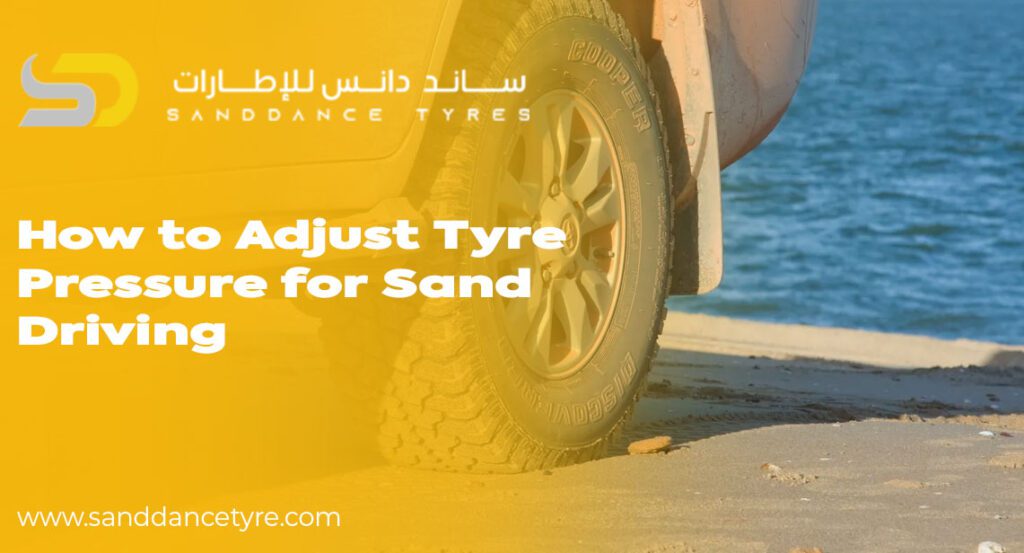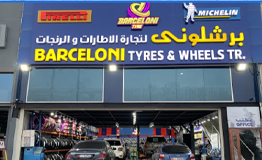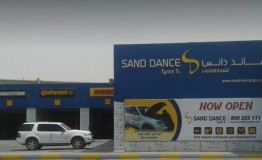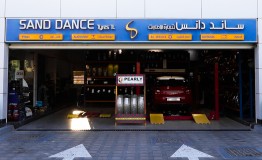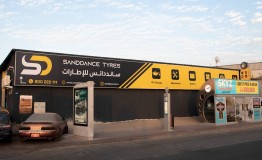Driving in the sand is a thrilling experience that includes the vast deserts and dunes of the UAE. However, it also requires a different approach than what is used on the highways or in rocky terrain. What mostly affects vehicle performance on sand is tire pressure. By learning to change tire pressure for sand driving, you can improve traction, reduce the chance of getting stuck, and protect your vehicle’s drivetrain. For off-road enthusiasts and beach explorers in particular, this is a key skill for a safe and smooth ride.
Why Tyre Pressure Matters in Sand
Tyre pressure also plays a key role in how your tires perform on sand. On typical roads, high pressure keeps the tires firm, which in turn improves fuel efficiency. But on loose sand, that firmness is an issue. High-pressure tires tend to sink into the soft surface, which in turn reduces traction and increases the chance of your vehicle getting stuck. Lowering the tire pressure causes them to spread out and “float” above the sand, which in turn creates a larger footprint and better grip.
Understanding the Science of Traction in Sand
Traction is the force that your tyres exert on the base of the road. In sand, that force is hard to maintain as the surface is ever shifting under the vehicle’s weight. When you drop your tyre pressure, what you do is increase the contact patch, which in turn spreads out the car’s weight. This reduces the pressure at any given point, which in turn allows the tyre to stay on top of the sand instead of digging in. This is a common practice in dune bashing, beach driving, and desert safaris, which take place in the UAE.
Read More: Why Tyre Balancing Matters More Than You Think
Ideal PSI Levels for Beach Tyre Driving
There is no one-size-fits-all answer for perfect beach tyre PSI, but what we do see is that most off-roaders report using a pressure between 12 and 18 PSI for sand. What is right for you will depend on your tire size, vehicle weight, and the terrain. We suggest starting out at a higher pressure and then lowering incrementally as you go, at the same time, pay attention to how your vehicle is performing. Of course, go too low and you run the risk of your tire coming off the rim or damage from sharp turns.
How to Deflate Tyres Safely Before Sand Driving
Before you hit the dunes or the beach, find a safe spot to stop and drop the pressure in your tires. Use a tire pressure gauge for accuracy and release the air in small increments. Specialized deflators are a pro’s tool that makes the job easier. Also, always check that the pressure is even across all tires to avoid any handling problems. In the UAE, many off-road drivers have portable deflation kits that they use to get this done quickly and safely before they head into the sand.
Re-Inflating After Sand Driving Is Crucial
Once out of your sand driving, do what is needed to get your tires back to the pressure recommended by the manufacturer. Tarmac travel on deflated tires is dangerous; it diminishes brake performance, steering input, which is less responsive, and puts you at great risk of tyre failure. Most off-roaders have portable air compressors, which they bring along or use fill stations at the petrol stops at desert access points. Re-inflation of tires brings you back to a safe condition for highway driving.
Common Mistakes in Tyre Pressure Adjustment
A typical error that drivers make is going too far in reducing tyre pressure, which in turn may cause tyre bead separation or sidewall damage. Also, it is an issue of not equalizing all four tires, which results in an off-balance car and poor handling. Some drivers also forget to put air back in the tires after a trip in the desert, which may cause a blowout on the way home. For proper tire care, we should check the pressure at any point in the trip, which may see changes in terrain or load, and adjust the pressure as needed.
Benefits of Correct Tyre Pressure in Loose Sand
When you set the tyre pressure right for sand driving, what you will see is an immediate change in how the car handles and performs. The car will ride better over dunes and have less trouble in soft areas. Also, by doing this, you will put less strain on the engine and drivetrain, which usually will overheat or wear out fast in high-resistance environments. People who like to hit the dunes at Liwa, Al Qudra, or Ras Al Khaimah know the issue with traction and that tyre pressure has a large role to play in that.
Choosing the Right Tyres for Sand Driving
While pressure adjustments do go a long way but it is also very important to have the right set of tires. Look for tires that have wide walls and flexible treads that are meant for sand. These tires perform better when slightly deflated and are also less likely to get damaged during off-road use. We recommend that you talk to the experts at Sanddance Tyres to choose the best option for your vehicle and your particular need. Whether you are out for a casual beach ride or a dune adventure, the right tires are what make the trip.
Bottom Line
Master’s in tyre pressure adjustment, which is the base of off-road driving in the UAE. It improves performance, protects your vehicle, and keeps your desert trips fun and safe. Before you hit the sand, lower the pressure and once you are done, sand drive reinflate your tyres; this will get your tyres to perform at their best in both off and on-road. At Sanddance Tyres, we help UAE drivers prepare their cars for any terrain with our expert advice, high-quality tyres, and professional pressure management tools. Sand driving is all about control, and that control begins with the right tyre pressure.
Frequently Asked Questions
Why do I reduce my tyre pressure for sand driving?
Lower reduction in tyre pressure, which in turn increases the tyre’s contact area, thus the vehicle rides over soft sand instead of sinking into it. This also improves traction and prevents the vehicle from getting stuck.
What is the minimum pressure I can put in my tires for sand?
Most often, what we see is that pressure is set between 12 and 18 PSI according to tire size and vehicle weight. We suggest starting at a moderate level and adjusting based on how the car responds to your drive.
Can I use my tires at a lower pressure after sand driving?
No, do not use low tire pressure for tarmac driving. Before you hit the road again, top up your tires to prevent damage and to reduce accident risk.
Do I have to use special tires for sand driving?
Standard tires may see an improvement with proper pressure adjustments, but we see that in off-road or sand-specific tires, we get better grip, which also, in turn, reduces sidewall damage.
Is it required to bring your own tire inflation and deflation equipment?
Sure, yes, we see the value in having a portable compressor and deflation tools, which make tire pressure issues a more convenient issue to deal with on your off-road trips.


